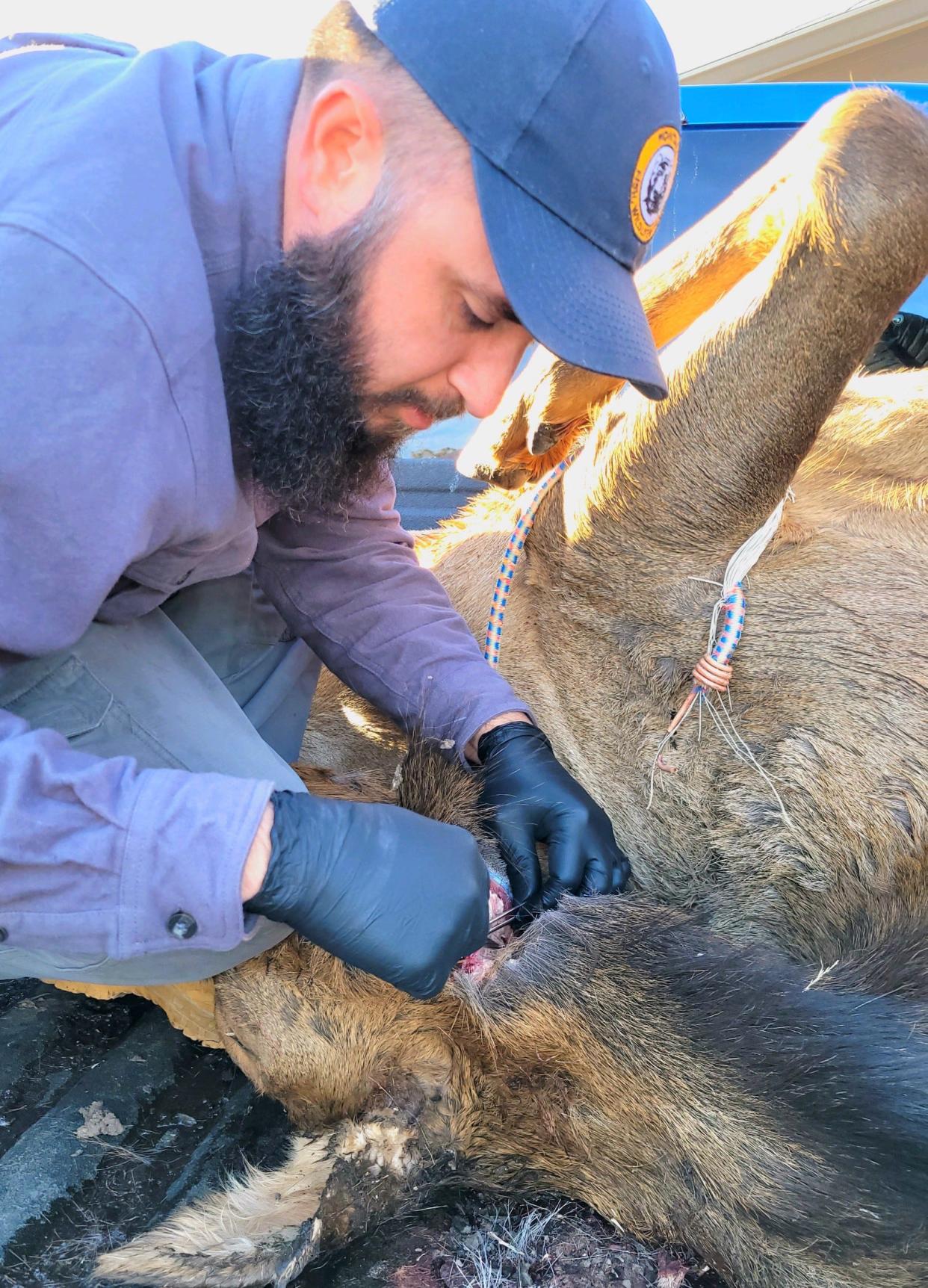Chronic Wasting Disease confirmed for first time in Belt hunting district

Wildlife health staff with Montana Fish, Wildlife & Parks (FWP) have confirmed a case of chronic wasting disease in a mule deer buck recently harvested from hunting district 405, about 10 miles north of the town of Belt. It is the first time an animal infected with chronic wasting disease, or CWD, has been confirmed in the district since statewide testing began more than three years ago.
"Out of the 100 deer sampled there over the past three hunting seasons, none tested positive for CWD," FWP reported Thursday. "FWP has conducted rotating surveillance for CWD throughout the state for several years, and HD 405 is within this year’s priority surveillance area."
CWD is a contagious neurological disease that infects deer, elk and moose. It is always fatal, and there is no known cure. It was first detected in Montana’s wild herds in 2017. The disease is known to exist in other parts of north-central Montana, especially north of Highway 2, as well as in other areas of the state.
Since 1967, CWD has swept with lethal force through deer, elk, moose and caribou across 25 states and three Canadian provinces. International concern about the disease is so acute that in 2017, when three CWD infected reindeer were found in Norway, that country's Ministry of Agriculture and Food ordered the entire herd be exterminated. A total of 1,407 animals were ultimately put down, amounting to about 6 percent of Norway's entire reindeer population.
"CWD is a slow-moving, fatal neurological disease of the cervid family," explained wildlife biologist Ryan Rauscher during a public information session held in 2019. "It is not alive. It's an organic compound. Its Mad Cow Disease in deer, basically."
It is believed that the most common vector for the spread of CWD is animal to animal contact; nose-to-nose touching, males fighting during the rut, transmission during breeding, and animal contact with blood, feces and urine.
It likely spread into Montana naturally, both north from Wyoming, which has already experienced a 21-percent annual decline in the population of some CWD-infected herds, and south from Saskatchewan, where more than 28 percent of the deer are believed to be infected.
Rauscher noted that state wildlife officials must rely heavily upon the education and cooperation of Montana hunters to help stem CWD's spread. The large majority of tissue samples used to track the spread of CWD have been obtained voluntarily from hunters; a collaborative aspect FWP officials wish to continue.
"Hunters are our best tools to manage CWD," Rauscher said. "Sampling is completely voluntary, so when we ask, please do." FWP has provided resources to help hunters collect and submit samples for free testing on their own.
CWD is not known to infect humans. However, the Centers for Disease Control and Prevention (CDC) recommends that people not eat meat from infected animals and have their harvested animals tested before eating them if they were taken from an area where CWD is known to exist. For more information on CDC recommendations, please visit https://go.usa.gov/xAcnc
In addition, FWP offers several locations around the state where FWP staff will collect samples for hunters. These resources and others can be found at https://fwp.mt.gov/cwd
Here are the CWD sampling stations located in Region 4:
Belt: Located at pull-out at the intersection of Highwood Rd. and State Highway 331, nine miles north of Belt; open Saturday and Sunday, 10 a.m. – sunset
Chester: Located at Lions Park Rest Area; open Saturday and Sunday, 10 a.m. – dark
Fort Benton: Located at pull-out 1 mile west of Fort Benton at the intersection of State Highway 386 and US Highway 87; open Mondays, 9 a.m. - 2 p.m.; Fridays, 1 p.m. – sunset
Grass Range: Located at pull-out 1/2 mile west of the intersection of US-87/ HWY 200 and HWY 19; open Saturdays and Sundays, 10 a.m. - sunset; Mondays, 9 a.m. - 1 p.m.; Fridays, noon–sunset (closed Nov. 11)
Shelby: Located at I-15 Southbound Weigh Station, 3 miles north of Shelby; open Saturday-Monday, 10 a.m. - 1 hour past dark
Great Falls: Located at FWP Region 4 Office 4600 Giant Springs Road, Great Falls; open Monday-Friday, 8 a.m. - 5 p.m.
This article originally appeared on Great Falls Tribune: Montana FWP confirms first case of CWD in deer near Belt, Montana

